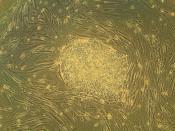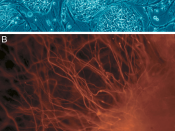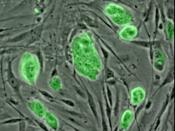In the scientific and medical communities the topic of cloning has brought about many questions. The biggest misconception concerning cloning is that it is all about trying to copy a human being. However, there are two main types of cloning, with many sub categories within those two types. These two main types are Therapeutic cloning and Embryonic cloning (Farnsworth). It is the therapeutic type of cloning that has the potential to save the terminally ill, cure various nervous system diseases, and even allow paraplegics to walk again (What). With all these benefits therapeutic cloning should be more widely used and researched in today's hospitals.
The first people to use the term "clone" were the early Greeks. The Greeks spelled it "klon" meaning twig or cutting ("Cloning). Today, the term cloning is defined as the production of one or more individual organisms/organs that are genetically identical to the original ("Therapeutic). In layman's terms it means copying an organ or an entire organism.
The first major discovery that sparked the interest in this subject was the creation of Dolly. On February 23, 1997, Dolly the sheep was born in England ("A). A group of scientists at the Roslin Institute successfully produced an exact duplicate of a female sheep (Will.) Throughout the years after this major breakthrough many groups of scientists have continued researching this topic. Of all the countries involved in this research China had made the most discoveries, due to the fact that the government has placed no laws restricting this act. Though China's findings were minor they still remain significant, some of these findings being a newer and more efficient way to remove the cell nucleus, and successfully using frozen cells as nucleus donors.
To understand therapeutic cloning, a brief overview of reproductive/embryonic cloning must be given. This main type...



Soo good.
This essay is soo good that i would like to make passionate love to it. I love you man needed the ideas from this. There is nothing better than this essay. You couldnt ask for anything better. This essay is 'Perfection'. thank you jebus.
2 out of 2 people found this comment useful.